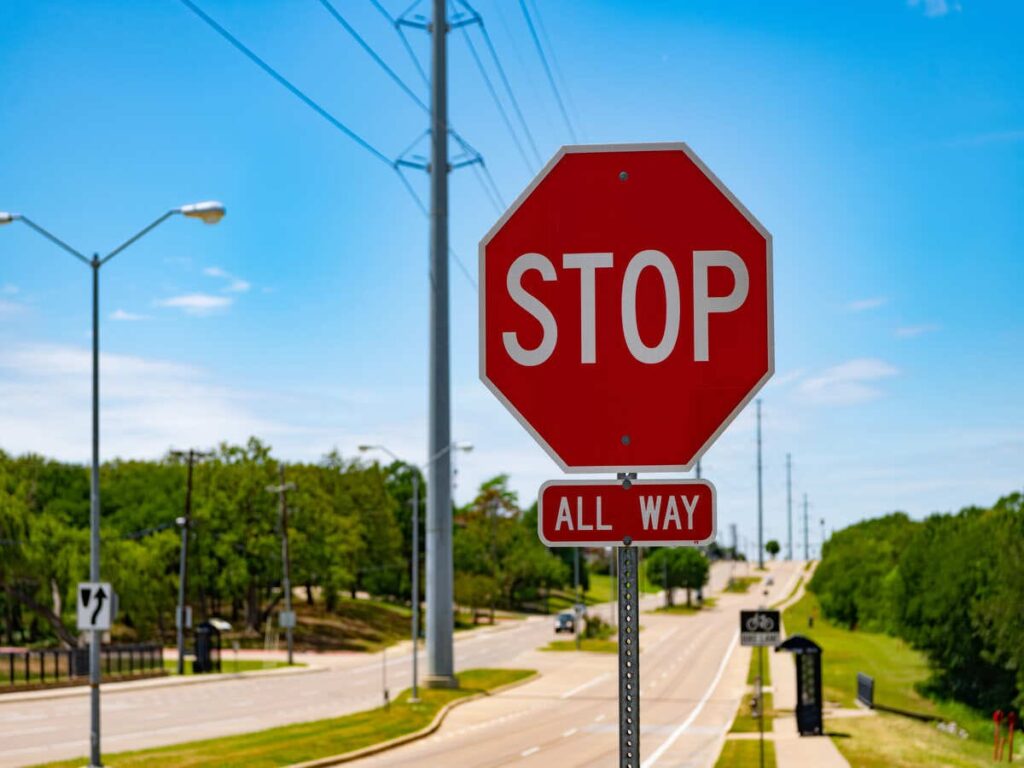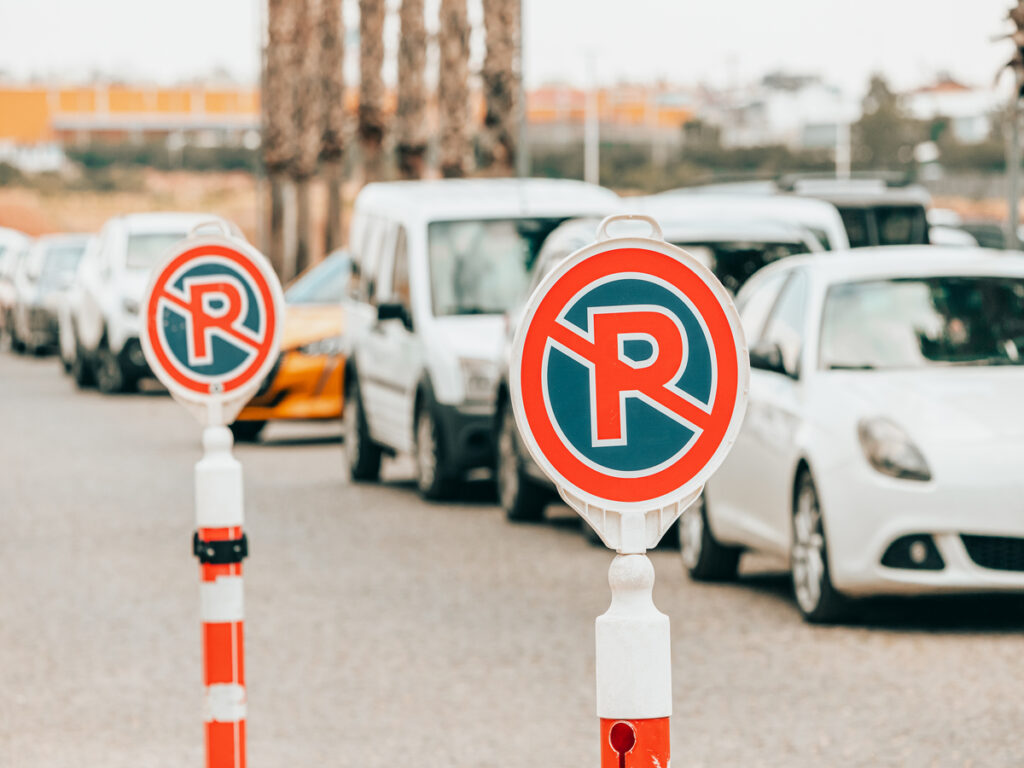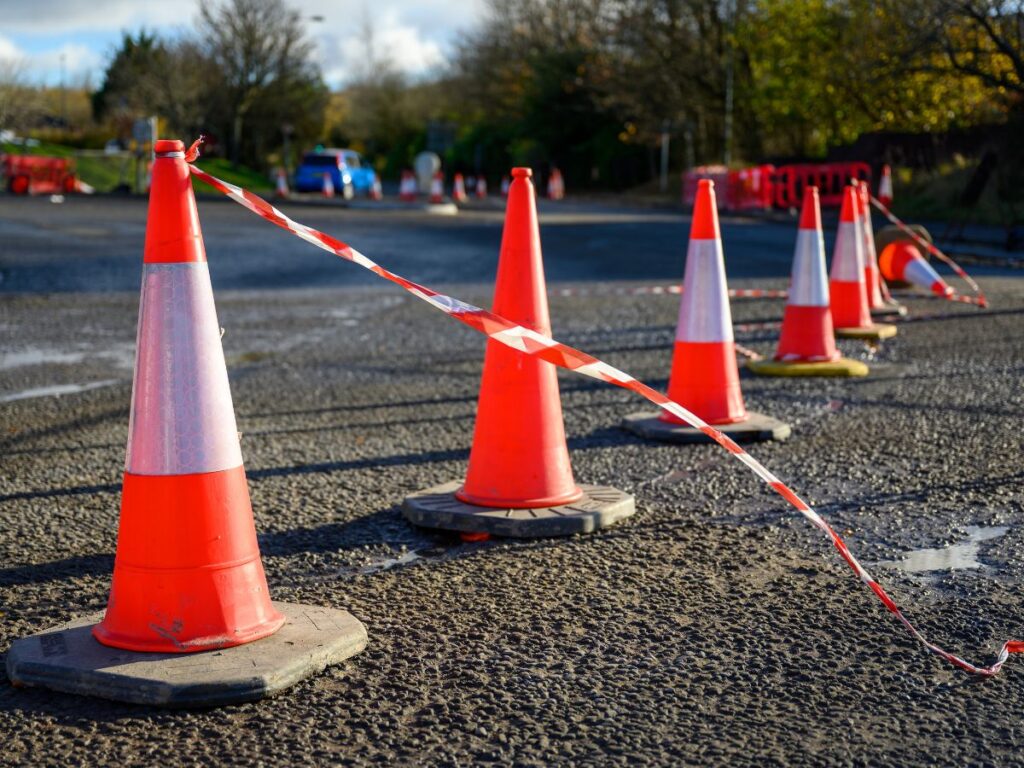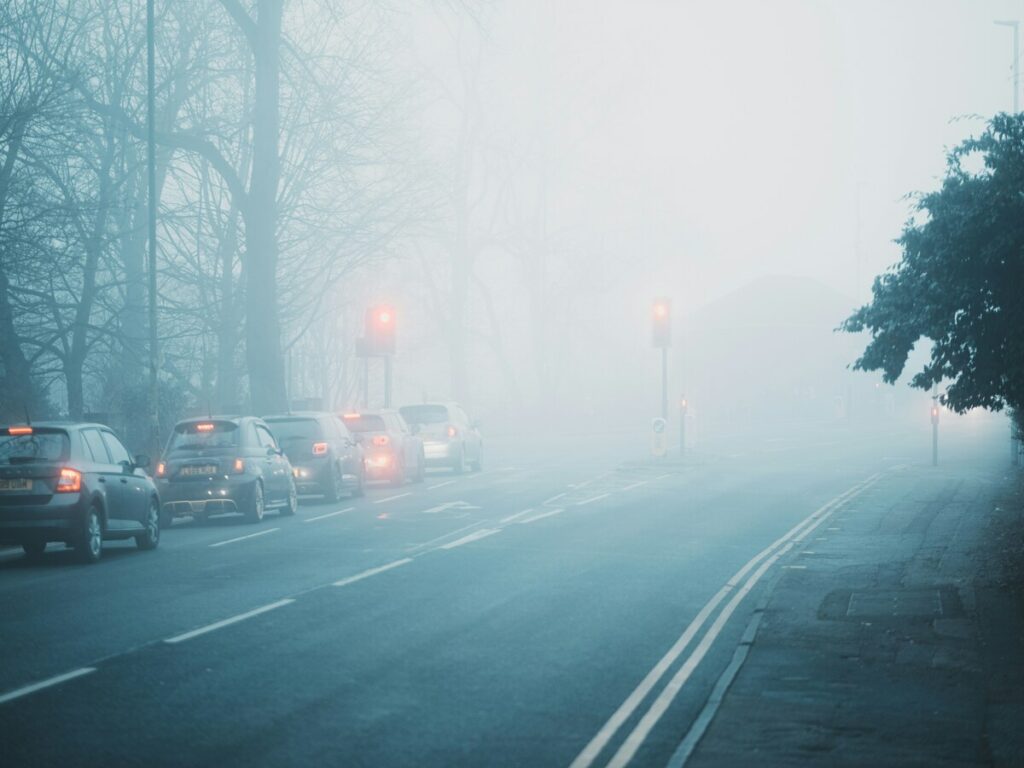
الضباب is one of the most common and hazardous weather phenomena encountered by drivers worldwide. It significantly reduces visibility, making roads more dangerous and increasing the likelihood of accidents. In regions prone to frequent fog, safety measures such as cones for street become essential tools to ensure road safety. These street cones, often equipped with reflective materials and high-contrast colors, help drivers identify road boundaries, navigate hazardous areas, and avoid collisions.
OPTsigns street cones ensure visibility in dense fog. With reflective sheeting and bright colors, they guide drivers safely. Durable and reliable, they enhance road safety in low-visibility conditions.
What is Fog, and Why Is It Dangerous for Drivers?
Fog is formed when water vapor in the air condenses into tiny water droplets suspended close to the ground. This phenomenon occurs when warm air interacts with cooler surfaces or when air cools rapidly overnight. Fog typically forms during the early morning or evening hours, particularly in areas with high humidity, creating a low-visibility environment that can make driving extremely hazardous.
The Dangers of Fog for Drivers
Fog poses multiple dangers for drivers:
- Limited Visibility: When visibility is reduced to a few meters, drivers cannot see upcoming obstacles or hazards, مثل علامات الطريق, other vehicles, أو المشاة.
- Increased Risk of Collisions: Fog makes it harder for drivers to judge distances and speeds, leading to rear-end collisions and accidents at intersections.
- Disorientation: In dense fog, drivers may become disoriented, struggling to differentiate between road boundaries, الممرات, and off-road areas.
- Delays in Reaction Time: Reduced visibility means that drivers have less time to react to sudden changes in traffic flow or road conditions.
Due to these dangers, traffic control measures such as street cones are crucial in helping drivers maintain safety during foggy conditions.
Where is Fog Most Common in North America and the UK?
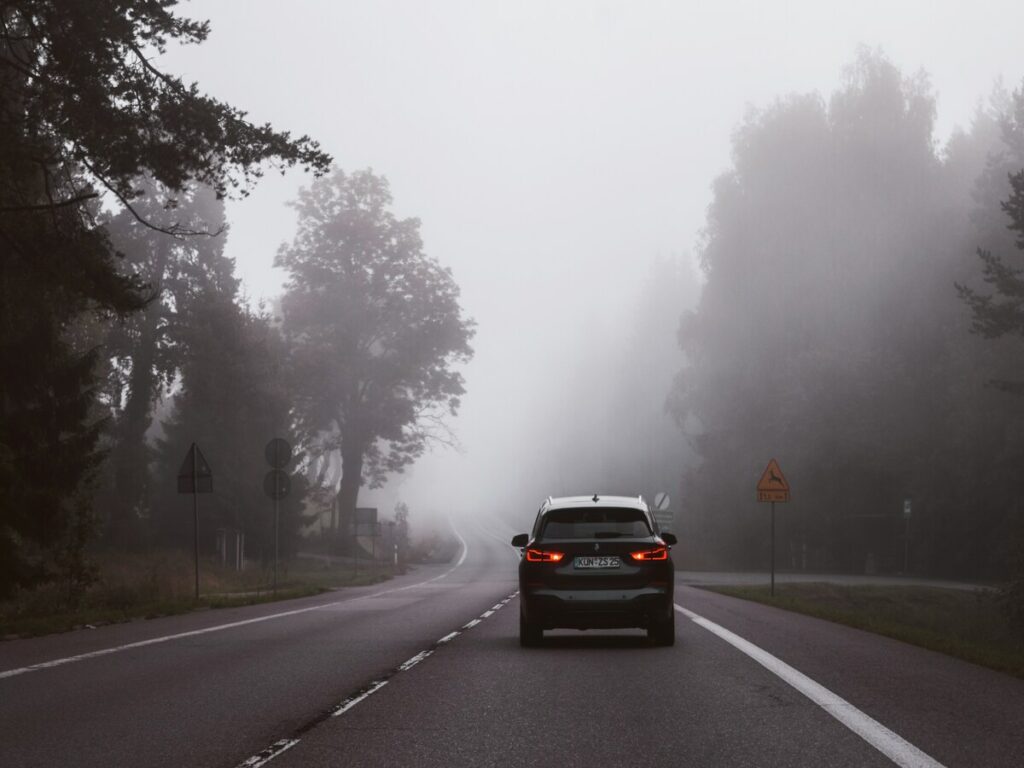
Fog is a global issue, but certain regions in both North America and the UK are more susceptible to dense fog due to their geography, مناخ, and weather patterns.
Fog in North America
في أمريكا الشمالية, fog is most common in coastal areas, river valleys, and regions with high humidity. Certain areas experience fog more frequently than others, particularly during the fall and winter months. Here are some key regions in North America where fog is prevalent:
San Francisco Bay Area, كاليفورنيا
ال San Francisco Bay Area is well-known for its fog, especially during the summer and fall months. The fog occurs when cold air from the Pacific Ocean meets the warmer air inland, causing condensation and reducing visibility. The dense fog can affect morning commutes and is particularly notorious for disrupting visibility in areas like the Golden Gate Bridge.
Northeastern United States
Cities like نيويورك, بوسطن, و فيلادلفيا experience frequent fog during the fall and spring months, with conditions most severe in the early mornings. The fog is often a result of temperature fluctuations between the warm air from the land and the cool air from the ocean.
Great Lakes Region
ال Great Lakes, particularly areas like شيكاغو و Detroit, experience dense fog due to the interaction of the warmer water in the lakes and the colder surrounding air, particularly in autumn. The combination of moisture from the lakes and temperature changes leads to frequent foggy conditions, especially in the early mornings.
Mississippi River Basin
ال Mississippi River Basin and other wetland regions experience high humidity, making them prone to dense fog, especially in the early mornings and during the colder months. Areas around لويزيانا, ميسيسيبي, و ألاباما often see fog, which reduces visibility on highways and rural roads.
OPTsigns أمريكا السوداء قاعدة المخاريط المرورية are ideal for maintaining safety in such conditions. Their reflective sheeting ensures high visibility even in dense fog. These street cones help guide drivers safely, reducing the risk of accidents in low-visibility zones.
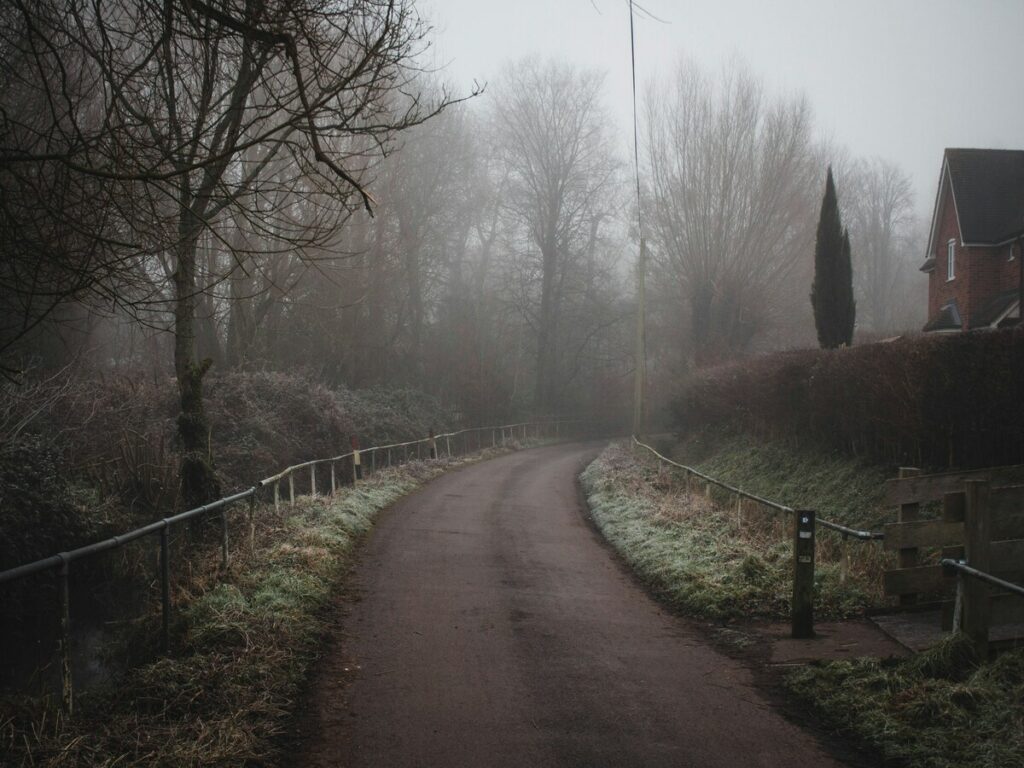
Fog in the United Kingdom
The UK is no stranger to fog, with certain areas experiencing thick fog several days a year. The geographic and climatic conditions of the UK contribute to the frequent occurrence of fog, especially in coastal and rural regions. ال UK Met Office reports that the country experiences around 50-70 foggy days annually, with some regions experiencing more frequent or intense fog.
المناطق الساحلية (South Coast and Cornwall)
Coastal regions, particularly in the South Coast of England and Cornwall, are more prone to fog due to the temperature differences between the cold sea and warmer land during autumn and winter. The moist air from the sea combines with the land’s cooler temperature, forming dense fog that can persist for several hours, particularly in the morning.
Rural and River Areas (Thames Valley, Yorkshire, and Cumbria)
ال Thames Valley, Yorkshire, و Cumbria experience frequent fog, especially in rural areas with large open fields and river valleys. The cold temperatures in these regions, particularly in the winter, make them more prone to fog formation, especially during early mornings and late evenings.
المناطق الحضرية (لندن)
Even major cities like لندن experience significant fog due to urban heat and pollution. The difference in temperatures between the city center and surrounding rural areas leads to fog formation, particularly in the colder months. While fog is not as common in cities as it is in rural areas, it can still create hazardous driving conditions in the early mornings.
OPTsigns Europe Solid Traffic Cones provide reliable solutions in these conditions. تعمل المواد العاكسة على تحسين الرؤية, even on the foggiest days. These durable orange street cones help maintain road safety by marking hazards and guiding drivers through low-visibility areas.
The Impact of Fog on Road Safety: The Hidden Dangers
Fog can turn even the simplest drive into a hazardous journey. It isn’t just an inconvenience for drivers, but it can drastically reduce their ability to navigate safely and make critical judgments. Let’s break down some of the main risks that fog creates for road users.
Impaired Visibility
When dense fog sets in, visibility can be reduced to a few meters. This makes it incredibly difficult for drivers to see road signs, الممرات, التقاطعات, or even other vehicles. The blurred outlines of the road can confuse drivers, causing them to swerve or slow down unpredictably.
- Judging Distance and Speed: Reduced visibility means that drivers struggle to gauge their distance from other vehicles. Drivers may misjudge the appropriate speed for the conditions, leading to tailgating, which is particularly dangerous in foggy conditions.
- Lack of Awareness of Road Hazards: Fog can obscure potholes, أعمال الطرق, and other obstacles, making it difficult for drivers to react quickly enough to avoid these dangers.
Increased Risk of Collisions
Dense fog is responsible for a high number of accidents every year, both minor fender benders and severe collisions. It impairs a driver’s reaction time, making it difficult to stop in time when approaching slower vehicles or obstacles on the road. The reduced visibility also makes it harder to see other vehicles, causing multiple-vehicle crashes and rear-end collisions.
- الاصطدام الخلفي: A common incident in foggy weather, where one driver does not see the vehicle ahead in time and collides with it. This is especially true when the lead vehicle slows down or stops abruptly, making the trailing car’s driver unable to respond in time.
Disorientation and Lack of Orientation
In thick fog, road markings become almost invisible, which disorients drivers and can make it difficult for them to determine where the road begins or ends. في المناطق الريفية, fog can lead to drivers inadvertently veering off the road or making incorrect turns, leading to accidents or getting stuck in ditches.
The Role of Traffic Cones in Foggy Weather

في الطقس الضبابي, visibility is drastically reduced, which is where cones for street become essential. These street cones provide highly visible markers, guiding drivers and protecting both pedestrians and drivers from unexpected hazards. Here’s how street cones serve a critical role:
مواد عاكسة: The Key to Visibility
One of the main reasons that traffic cones are so effective during foggy weather is the reflective material that is used on most street cones. The reflective strips help bounce light back toward drivers, which makes them visible from much greater distances than non-reflective cones.
- Types of Reflective Sheeting: Orange street cones often use high-intensity or micro-prismatic reflective sheeting. This material enhances the cone’s visibility by reflecting light from vehicle headlights and guiding drivers safely through reduced-visibility conditions.
In dense fog, reflective street cones help drivers spot key hazards. These include road closures, مناطق البناء, and accident sites. Even with reduced visibility, orange street cones allow drivers to see these hazards from a safe distance.
Bright Colors and High-Contrast Visibility
Traffic cones are typically made from high-visibility colors such as bright orange or fluorescent yellow, which contrast sharply against fog and low-light environments. These colors are designed to catch the attention of drivers and draw their focus to critical areas that need caution.
- Color Significance: Bright orange is one of the most universally recognized warning colors. في الضباب, bright colors contrast with the haze, making orange street cones and markers easier to spot.
Marking Hazardous Areas and Road Boundaries
Fog often obscures the edges of roads, which can lead to drivers inadvertently straying off course. Placing cones for street at strategic intervals helps outline road boundaries, keeping drivers on track.
- Marking Road Boundaries: Traffic cones on highways or rural roads mark the edges, guiding drivers to stay on track. This is particularly useful in areas where there are sharp turns, التقاطعات, أو إغلاق الطرق.
Best Practices for Using Traffic Cones in Foggy Conditions
في الطقس الضبابي, simply placing traffic cones on the road may not be enough. Proper placement and combination with other safety measures are essential to maximizing their effectiveness. Here are some best practices for using cones for street in foggy weather:
التنسيب الاستراتيجي للأقماع المرورية
Proper placement of traffic cones ensures they guide drivers safely through foggy roads. Here are some tips for their optimal use:
- At Intersections and Curves: Place orange street cones at intersections or sharp turns where fog could obscure road signs and other vehicles.
- Marking Lane Boundaries: Use orange street cones to mark lane boundaries, ensuring drivers stay in their lanes.
- Around Road Hazards: Position orange street cones around road hazards such as construction zones, الحفر, or damaged surfaces to alert drivers in time.
Pairing Traffic Cones with Other Safety Measures
In dense fog, cones for street should be used in conjunction with other safety measures to provide optimal visibility and guidance:
- Electronic Road Signs: يستخدم علامات الرسائل المتغيرة to warn drivers about foggy conditions ahead and encourage them to slow down.
- Flashing Warning Lights: Pair street cones with flashing lights or beacons to further enhance visibility in foggy weather.
- Barricades and Roadblocks: In severe fog, barricades can be used in conjunction with cones to prevent traffic from entering dangerous areas.
التفتيش والصيانة المنتظمة
Traffic cones must be regularly inspected and maintained to ensure they remain effective in foggy conditions. تحقق من الضرر, يتلاشى, or wear to the reflective sheeting, and replace any orange street cones that have lost their visibility.
Fog is a dangerous weather condition, but reflective traffic cones for street can help reduce the risks by improving visibility. In regions prone to fog, such as North America, well-placed cones, combined with other safety measures, can make roads safer.
In cities like London or the Great Lakes, cones for street guide drivers through foggy conditions, enhancing safety for drivers.

